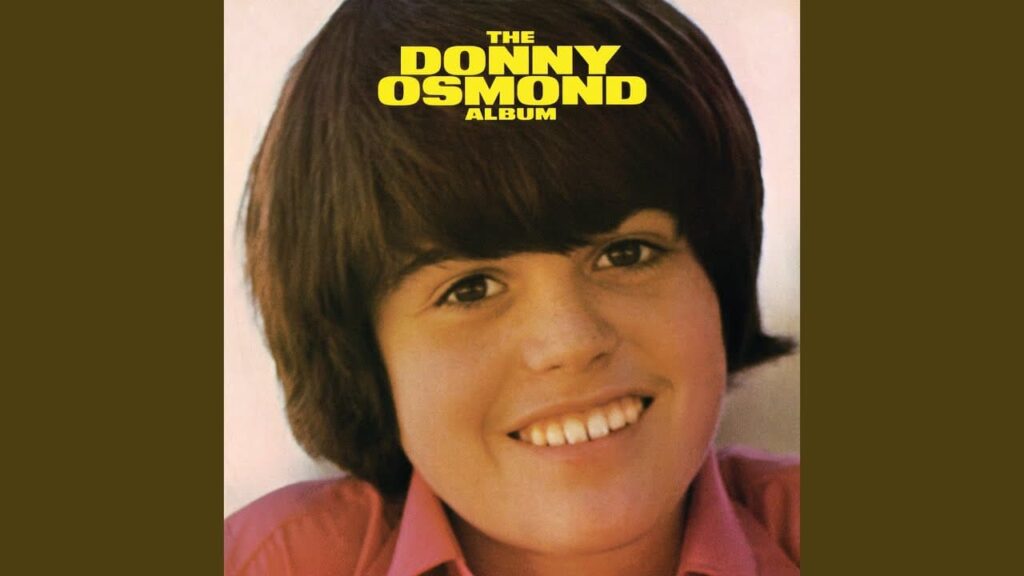
The Day a Boy Became a Superstar: Reflections on Sweet & Innocent
Ah, the early seventies. What a time it was, wasn’t it? The air was thick with the scent of teen spirit, and the radio waves were being tuned to a new, pure sound. For so many of us who grew up with the wholesome charm of The Osmonds on The Andy Williams Show, the arrival of Donny Osmond as a solo star felt less like a new beginning and more like the inevitable blossoming of an already beloved talent. The moment that truly sealed this transformation was the release of a song that, even now, carries the distinct, glittering pop aroma of 1971: “Sweet and Innocent.”
Chart-Topping Innocence and the Solo Launch
This wasn’t just another Osmonds single—it was a declaration. Officially released on February 27, 1971, “Sweet and Innocent” was the pivotal track that launched Donny Osmond‘s parallel solo career, separate from the successful group dynamic he shared with his older brothers. The single was an immediate, resounding success, a testament to the young singer’s burgeoning fanbase. It soared up the charts, peaking at No. 7 on the US Billboard Hot 100 singles chart on June 5, 1971. In the more than two decades since its original recording, the song still managed to captivate a new generation, earning an RIAA Gold certification on August 30, 1971. Its success cemented Donny‘s status as the era’s foremost teen idol and served as the cornerstone of his 1971 debut album, aptly titled The Donny Osmond Album, though the song also appeared on The Osmonds’ Osmonds album from the previous year.
📖 The Story Behind the Song: From Roy Orbison to Teen Pop
The fascinating thing about “Sweet and Innocent” is that it wasn’t born in the teen pop bubble of the 70s. The song was originally written by Rick Hall and Billy Sherrill, and first recorded way back in 1958 by the legendary Roy Orbison as a B-side. Orbison’s version carried a different lyrical weight, a compliment to a woman’s virtues.
However, when Rick Hall—the celebrated producer from FAME Studios in Muscle Shoals—re-recorded it with The Osmonds and put 13-year-old Donny front and center, the track underwent a subtle but crucial metamorphosis. The lyrics were reportedly “substantially reworked” for Donny’s version. No longer a mere compliment, the song took on the voice of a young man slightly repulsed or perhaps just overwhelmed by the girl’s sheer, unadulterated innocence. This lyrical shift was brilliant—it transformed a mid-tempo ballad into the perfect bubblegum pop narrative, allowing the young Donny to play the part of a boy-next-door who wasn’t quite ready for the complexities of adult love. Donny, in his 1999 autobiography, recalled the song being part of a strategy by Rick Hall to develop his solo career with an alternate song strategy, recognizing his “audience within an audience.” This pivotal single became the foundational model for the pop trajectory that would make him a household name.
The Enduring Meaning: The Pain of Being Too Young
For those of us who remember navigating the turbulent waters of our own early adolescence, the meaning of “Sweet and Innocent” is palpable. It speaks to the feeling of being confronted with a relationship that, while alluring, is ultimately too much, too soon. Donny‘s youthful, earnest vocal delivery, dripping with sincerity and a touch of mock-adult weariness, perfectly encapsulates this emotional quandary. The song’s protagonist is ostensibly turning the girl down, asserting that he’s “too grizzled” for her “sweet and innocent” nature—an absurd and endearing sentiment coming from a clean-cut teenage star. It was a fantasy: the appeal of a child pretending to be a world-weary adult, allowing his young fans to project their own budding, yet still sheltered, romantic dilemmas onto him.
It’s this very tension—the sophisticated production by Rick Hall meeting the pure, unblemished voice of a teen idol—that gave the song its enduring power. It wasn’t about sex or rebellion; it was about the dizzying, confusing, and ultimately sweet experience of discovering first love while still being, well, innocent. For every girl with a poster of Donny on her wall, this song was a private conversation, a promise of a love that was pure, devoted, and perfectly age-appropriate. Decades later, the song remains a cherished, nostalgic reminder of a simpler time, when a single four-leaf clover of a tune could launch a legend and capture the very essence of youth.
The melody and its catchy chorus are interwoven with the soundtrack of our formative years, a perfect pop specimen that showcased the “racial and stylistic crisscrossing” occurring at the legendary FAME Studios and setting the stage for Donny’s unstoppable ascent.